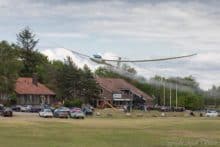Alphen aan den Rijn Sunday February 26 2012
ritzdeluy@hotmail.com www.glidinginternational.com www.soaringcafe.com
It could have been such a great weekend!
Blue skies, great cumulus clouds , sunny conditions, temperatures up to 11 dgr. C. But…….
Last Friday at 12, ONE week after the avalanche hit our prince Friso, the team of doctors from the Innsbruck hospital, gave a presse- conference with updates. [1.2 million people were looking!] It was NOT good! The prince [43] was not 20 but 25 minutes covered by snow and even worse his heart stopped due to lack of oxygen and it took 50 minutes to reanimate him. Maybe too long as the doctor mentioned!
On Thursday they finally could do an MRI scan and it seems that there is massive damage to the brain. They do not know if he will be ever conscious again and it might take months or even years. The royal family has decided to find a hospital specialised in coma-patients, for him where they can help him as much as possible.A shock for all of us hoping and believing in miracles. A disaster for the Queen , Mabel, their 2 young daughters [5 and 6] and the rest of the family.We can only wish them ALL the best.

Prince Friso, in better times.
During the SSA convention in Reno, one of the sessions was about how to get more young people interested in our great sport. With the slogan, ” Let’s go gliding”, Bill Daniels , chairman of the SSA Growth and Development Committee, introduced some ideas to let our soaringsport grow. www.LetsGoSoaring.org
When they would really be active, they should renew this site any week/month. The last article was from August 17 2011, that’s a bit of a pity. But the reminder during the last SSA conference in Reno was good. For all that news you can go to www.soaringcafe.com [ SSA strategy and tactics for growth “let’s go gliding” on February 8 or you can use the searcher in the right corner.]
One of the very active clubs in Holland is the FAC, which stands for Frysian Aeroclub, yes Friesland the province where our 11 cities-race was supposed to be! Talking about “growth in our soaring sport” they are doing a great job , their way!
On Facebook I read their activities for March:join in….
March 12 they visit a schoolyard , WITH a glider, to promote soaring, also as a step-up to get into the aviation world. Members who are already a pilot or know all about it, talk with the young ones.
March 17 they move to a “square of knowledge” where students from vocational training meet and listen and they will promote gliding on their open days and those of the Stenden University.
Also on March 17 10 new -to-be- pilots will get some theory from an instructor and enjoy ,[ hopefully the weather is good, ] their first day as AIC at the field.
Not a bad way of promoting our sport, is n’t it?
Some interesting flights from Blairstown in the USA last week. 800 km. flying the Appalachian ridges, without a thermal, as the pilot Robert Templin claims in his comment. One leg brought him about 300 km out and that all in an LS3. Some even called it an exceptional ridge day with a SE wind! Great flights also in Schweitzers [493 and 435 km] and LS 4. [772 km.] and Discus [747 km] .So it must have been exceptional!!!
Transponders! Some news via Jo from Australia with an article from the Washington Examiner about the FAA [Federal Aviation Administration] taking a [baby] step to improve glider safety:
Wed, 2012-02-22 17:00
Four years after the National Transportation Safety Board recommended that a national transponder code be set up specifically for gliders, the Federal Aviation Administration has finally gotten around to doing it. Effective March 7, gliders not in direct contact with an air traffic control facility will be encouraged — though not required — to use the transponder code 1202 instead of codes currently used by other small aircraft operating under visual flight rules. The VFRs effectively mean gliders are invisible to commercial airliner crews in the vicinity, since most of the lighter-than-air vehicles do not now carry transponders at all and are extremely difficult for the naked eye to spot.
Curiously, the FAA admits that its action followed from the need for a specific transponder code for gliders, which “operate under some flight and maneuvering limitations,” and was the result of “an accident, many incidents, and [the afore-mentioned] NTSB recommendation.” The accident was a 2006 collision involving a corporate Hawker jet and a private recreational glider operating near the busy Reno/Tahoe International Airport.
At the time, NTSB investigators stressed the need for a margin of safety beyond VFR, noting: “The concept of see-and-avoid is limited in preventing midair collisions due to the high speed of the aircraft involved.” However, despite the fact that nine people have died in glider-aircraft collisions over the past two decades, and that the NTSB recommended in 2008 that all gliders be required to carry transponders that enable other pilots to “see” them in the sky, the FAA has still not made it compulsory.
The latest official notice from Elizabeth Ray, vice president of the FAA’s Mission Support Services, Air Traffic Organization, sent to all air traffic control facilities in the United States, explained the reason for the code change: “[Gliders] may go from essentially stationary targets while climbing and thermaling to moving targets very quickly. They can be expected to make radical changes in flight direction to find lift and cannot hold altitude in a response to an air traffic control request.” That same reasoning could also be cited to support the NTSB’s common-sense recommendation that gliders be able to “squawk” their current position to other pilots on a continuous basis.
Although prohibited from flying in Class A airspace around major cities, there are many other areas in which gliders still share the sky with heavy, passenger-laden aircraft, including commercial jetliners. Last year, the FAA ordered a publicly funded airport in Southern California to reinstate 40 gliders it had evicted because of legitimate safety concerns — or risk losing its federal grants. And, since the FAA’s new 1202 code can only be used by gliders that already carry the equipment needed to broadcast it, the latest policy change is just a baby step in the right direction.–“
Still some nice soaring in Australia .From Narromine Czech pilot Roman Mracek, flew a nice 500 km. triangle . Luckily in the end of the season Narromine finally has the pleasure of better soaring weather , so they deserve. By the way the beginning of the season was pretty good there as well.
More to the West of S.A., it was Peter Temple, the fresh National Standard Class Champion, who flew from Gawler 611 km. in his LS 8, while a flight from 533 km. in a Mosquito was not bad either.
AND what about 891 km. by junior pilot Matthew Scutter in the LS 4!!!! What a talent!!!You can fly, or you can’t!!!
When he would have started earlier it could have been much more as he claims that half an hour before he launched clouds were already at 10.000 ft.
Benjamin and Fabian will look with interest, as they flew that far up N. several times from Stonefield!
Mind you it is nearly March! But as said before you can make in Australia, nice flights up to Easter.
Back to the East, the Keepit Regatta is on at Lake Keepit from February 19 till 25. Love Lake Keepit, great place for soaring.
Experienced pilots lead inexperienced pilots to help them with their X country soaring; follow and lead is the system. Also great for pilots who want to improve their skills in competition flying.
25 Pilots and 3 days out of 6.
Not so far from Lake Keepit and they might even meet in the air , are 50 hangglider pilots flying for the NSW State titles in fixed wings. Still remember some of them when they flew with us in Tocumwal. After 5 days of flying Conrad Loten from NZ and Aussie topper Jonny Durand , both flying Moyes Litespeed, are on spot 1 and 2. Pretty marginal circumstances but still 5 days. Best day had 98 km. the worst day, 9.6 km.
Talking last week about Uvalde. In open class it is not only pressure for the Concordia also the Schempp-Hirth glider in combination with Lange Aviation [wings, designed by Dutch Professor Loek Boermans] ] , Quintus , has to be ready in time. I noticed at the Uvalde list of entries, that at this stage, 2 Italian and 2 French pilots fly the Quintus during this 32d WGC. 6 Wings of this self launcher were finished in October , last year and at Schemmp Hirth they later built the bending outside wings and put the Maughmer winglets on . Only in April 2011 “we” saw the Quintus, a 23 m. span self launcher, for the first time at the Aero in Friedrichshafen, where it was a real eye -catcher. Just before Christmas on December 23 2011, it had it ‘s test flight and now they work hard to get it ready for the WGC.
Looking forward to see that glider as well in Uvalde. Just received the Gliding International and there I quickly read that atleast 10 Quintes will participate !!! Enough stress!!!
Also Francois Jeremiasse, a Dutch competitor in open class at Uvalde will fly the Quintus. He flies the first built one of the series with number 2. Francois is the dealer for Schempp Hirth in Holland.
Rest of the very interesting news from the last GI in my next blog!!SO much to read have to do that first!
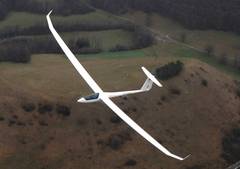
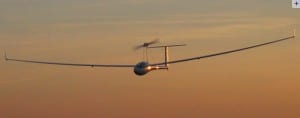
Quintus M and Antares 23E. Courtesy Francois.
Also just heard from Francois , who was delevering the first ARCUS for a Dutch pilot, when he called me, that 2 Antares 23 E gliders will fly under the clouds of Texas. What a great open class this year with all those fancy gliders.
So much elegance in the air!
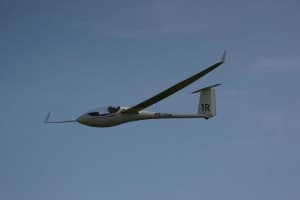
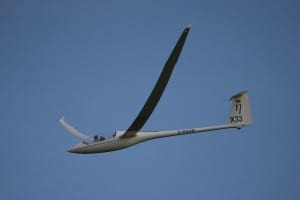
Steven Raimond will fly in Uvalde in 15 m. class! Will there be an ETA in open class?
Pictures courtesy Kai Monkkonen.
And a funny story to finish with received by Peter when you had not read it ;http://avherald.com/ :
Ducks enhance their navigation skills
By Simon Hradecky, created Friday, Feb 24th 2012 18:47Z, last updated Friday, Feb 24th 2012 18:57Z
A United Boeing 737-800, registration N37290 performing flight UA-1571 from Fort Lauderdale,FL to Chicago O’Hare,IL (USA), was on final approach to O’Hare’s runway 27L when the crew reported a flock of ducks was tracking localizer 27L outbound at 1200 feet MSL and added they were doing a dandy job on it too. Tower warned the next arrival about the ducks heading their way. All ducks and aircraft landed safely at their destinations.
Your- up- to- date. Spring is nearly there, the first 2 cycle-races have already started in Belgium this weekend.CU next Wednesday, cheers Ritz
